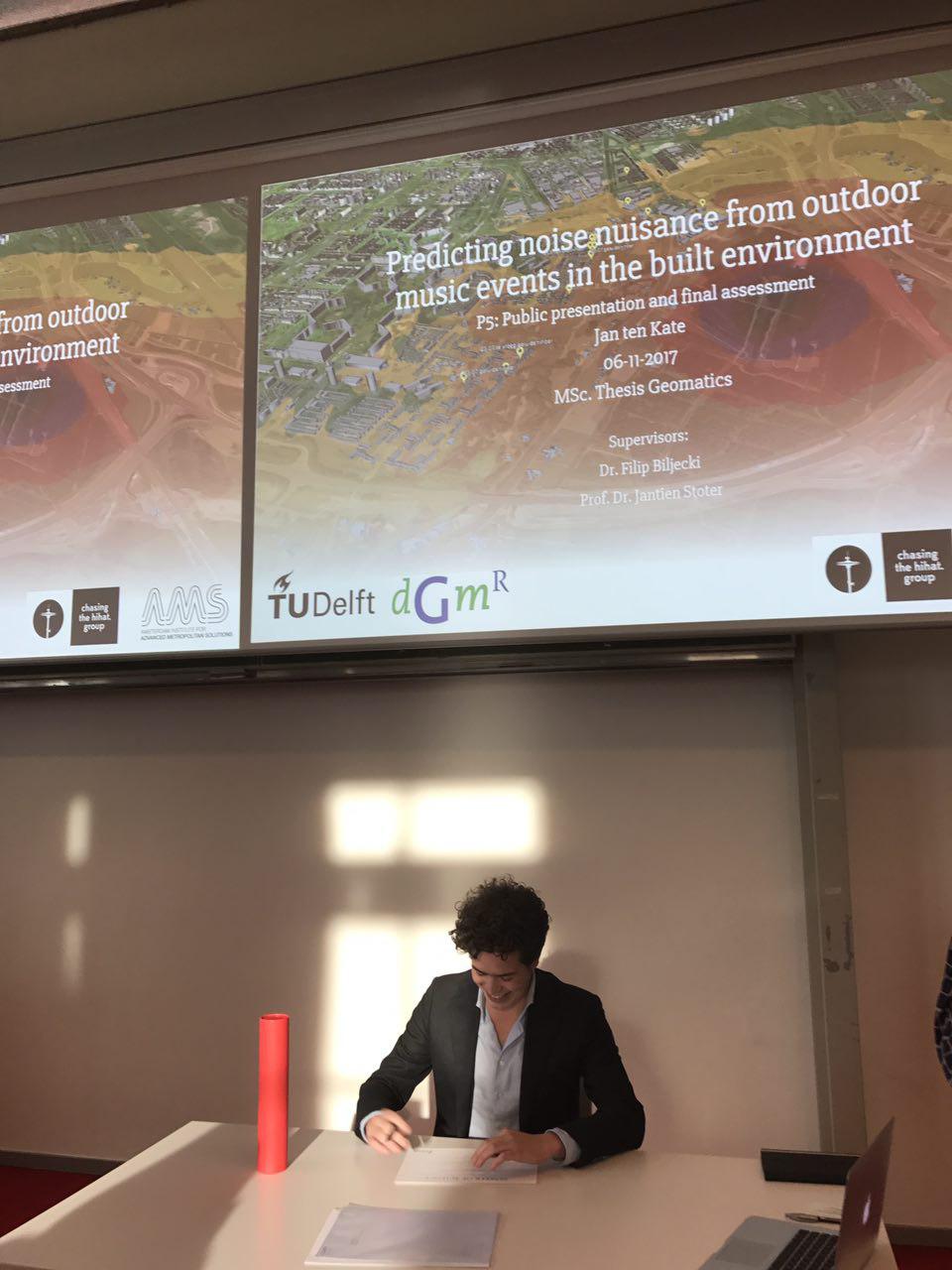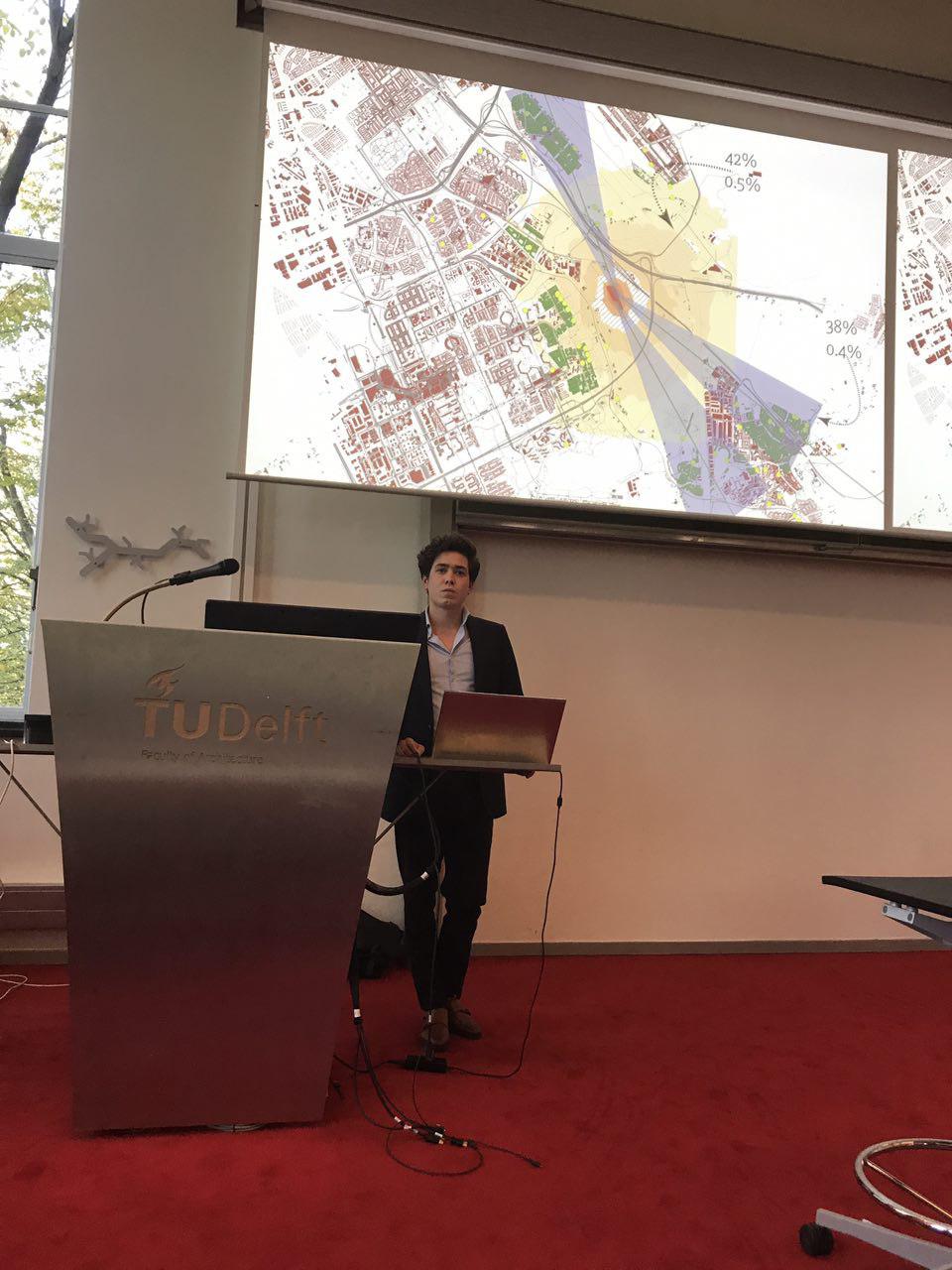Jan ten Kate graduated on predicting noise nuisance from music festivals in Amsterdam (graded with a 9.0)
Nov 8, 2017
On 6th of November 2017, Jan ten Kate successfully defended his Geomatics MSc research on “Predicting noise nuisance from outdoor music events in the built environment”. The MSc thesis, which was carried out within the context of AMS, was graded with a 9.0! The committee praised his extensive, high-quality and structured work that resulted in new knowledge in an unexplored, yet highly relevant, domain.
The main conclusion of the thesis is that a noise map, as used in current practice, is not a valid tool for predicting noise nuisance from outdoor music events. Jan has formulated and tested several recommendations to improve the noise prediction for outdoor music events: For example, the noise simulation should take the expected noise spectrum into account while in practice low frequencies are often ignored. The chosen sound spectrum has a significant influence on how the noise simulation propagates noise. For most artists, the expected noise spectrum can be estimated beforehand. Another proposed enhancement is to develop a calculation method that can take into account coherent noise sources (such as speakers) as well as the sight lines (cones) of speakers (within these cones, complaints were registered over a distance of 4.2km from the noise source). To tackle the momentary effects of the weather, multiple different situations should be simulated or the simulation of noise should be done prior to the event, when the weather forecast is known The strict meteorological conditions, that are currently used in the noise simulation, were only met for 1.6% of the total cumulated opening hours of the studied events, while Jan showed significant different outcomes of the simulation when different weather conditions are used.
The thesis resulted in new insights that can help to improve the noise nuisance prediction of music events to take measures accordingly. Eventually to reduce the nuisance that citizens experience from music events.
Congratulations, Jan!

